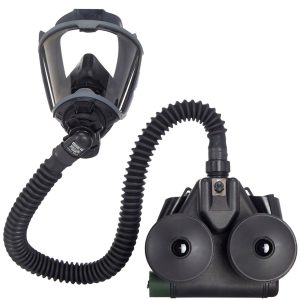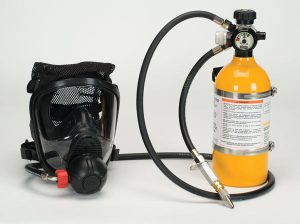Respiratory Protection Equipment: Types of RPE and how to use them
Jun 17, 2024

Respiratory Protection Equipment (RPE) is essential gear for protecting you from inhaling hazardous substances. In this blog, we’ll explore the important role of RPE, whether you are dealing with airborne contaminants like asbestos, fumes, or dust, RPE is an essential protective equipment (PPE) that makes sure you can breathe safely. Join us as we deep dive into the different types of RPE, their applications, and how they can protect you from potential health risks.
Before you even get started with RPE, make sure you have other practical control measures in place first; such as local exhaust ventilation or direct dust-extracted tools with a vacuum catchment to get rid of the majority of contaminants in the air. You should also be keeping an eye on your team’s health and workplace conditions to ensure that, over time, they aren’t being made sick or getting injured by their work.
Remember, there is no such thing as a healthy dust, even if you are outside!
We’ve gone ahead and put together a quick guide of factors to consider when providing your workers with RPE.
Types of RPE
Dust masks are basically the bottom of the list of ways to protect yourself, we would not recommend using these as they are mostly ineffective at creating a seal between you and the contaminants.
Respirators use replaceable filters to remove contaminants to clean the air for the wearer. They come in half-face and full-face versions. The cartridge filters are specific to certain types of contaminants, ask your manufacturer exactly which cartridge you should be using for the respirator you have and the contaminants you will be facing.
Remember if you have stubble or any facial hair you may not be getting the seal and the protection you think you are! So if you love your beard as much as your lungs read on to find out what you can do.

Powered air purifying respirators (PAPRs)
Are made up of headgear and fan assembly that take contaminated air, filters it, and then delivers the clean air to the user. These are also known as positive pressure systems. These not only keep you nice and cool, but offer the highest protection there is for people who have facial hair. Something to note with these is that the visors and headset can be impact rated if you need it, and don’t fog up because of the airflow

Supplied air respirators
Provide a supply of clean air to the wearer from a source such as an air compressor or cylinder. It’s important to note that the air supply needs to be checked regularly to make sure that it is safe to use – just think about what you see coming out of your air compressor when you release the valve under the air tank! The user must also be trained in how to use the system. If using these RPE’s you need to notify WorkSafe.

Using respiratory protection equipment
It’s important for your workers to visually check their RPE for signs of damage before each use to identify any issues, including whether it needs to be cleaned or decontaminated.
Make sure your team keep their RPE on while working in the hazardous area. Removing it for even a short period of time is a risk to their health.
Did you know that they come in different sizes? One size does not fit all!
If your workers are using RPE then make sure they are fit tested, this way you will know who needs what size, otherwise it may not work and give the protection your workers need.
The manufacturer of the RPE can tell you who can do this testing.
There are two checks which you need to do each time you use and RPE:
1 – check for damage visually to the sealing surfaces and straps
2 – check the valves are functioning correctly like WorkSafe images below

Image Source: Worksafe New Zealand
Keep in mind that if your worker’s safety glasses fog up while they are wearing a half-face respirator, this is a sign that there is a leak at the top of the respirator which means they are not getting full protection.
Life Shavers: Shaving your beard could save your life
When your workers are wearing respiratory protective equipment at work, they must be clean shaven to ensure it is forming a seal and protecting them from breathing in hazardous materials. Even a small amount of stubble can prevent RPE from sealing correctly which means your workers will still be inhaling harmful materials which may cause health concerns. A clean shave goes hand in hand with the correct RPE for the job.
It’s your legal responsibility to monitor your workers’ health. Make sure that you are completing regular Site Reviews on the HazardCo App, as this will help you to identify potential hazards and put effective plans in place. Your HazardCo Support Team is available throughout the day to guide you through this – call 0800 555 339 to talk it over.

Image Source: Worksafe












